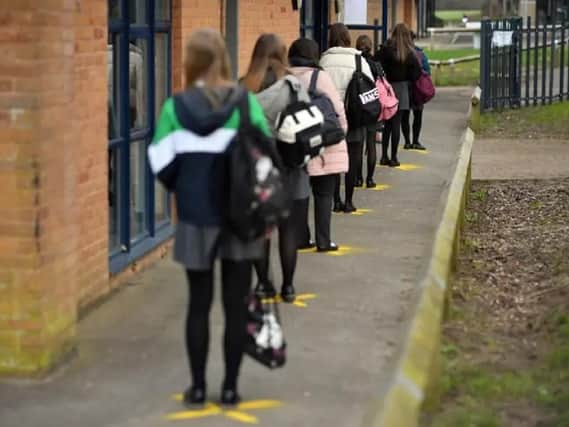Luton schools have among highest rate of Covid absence, figures show


Luton pupils missed among the most face-to-face teaching in the autumn term after having to self-isolate or shield due to Covid-19 figures reveal.
Schools across England reopened to all year groups from September, with students sent home in bubbles to self-isolate when coronavirus cases were detected.
Advertisement
Hide AdAdvertisement
Hide AdPupils across Luton missed the equivalent of 270,214 days of in-person education between September and December for this reason, Department for Education figures show.
That was an absence rate of 11.2% – among the highest in England – and equivalent to roughly eight days per pupil.
The figures include state-funded primary, secondary and special schools in the area.
Schools recorded general absence – including when authorised and unauthorised – separately, although this could include a child being ill due to having Covid-19.
Advertisement
Hide AdAdvertisement
Hide AdThe absence rate in Luton for the autumn term was around 4.7%, which was the same as the previous year.
Across England, the overall absence rate for the autumn term was also 4.7% – broadly in line with 4.9% a year earlier.
But a further 7% of in-person teaching was missed because of self-isolation or shielding due to Covid-19 – amounting to 33 million days, or five days per pupil.
Geoff Barton, general secretary of the Association of School and College Leaders, said the figures show the autumn term was “an extremely turbulent period” for pupils.
Advertisement
Hide AdAdvertisement
Hide Ad“This difficult situation was compounded by significant problems early in the term, obtaining Covid tests for pupils and staff and in obtaining public health support in handling positive cases,” he said.
“The Government’s refusal to give schools any flexibility to finish in-school teaching early before Christmas, which was accompanied by threats of legal action, made matters even worse.”
Schools were “badly let down” by government leadership during the autumn term, Mr Barton added, including by the “painfully slow” rollout of laptops for disadvantaged children that made remote education harder.
The rate of unauthorised absence in Luton's schools was 1.3% during the autumn term, which was similar to 1.2% in 2019.